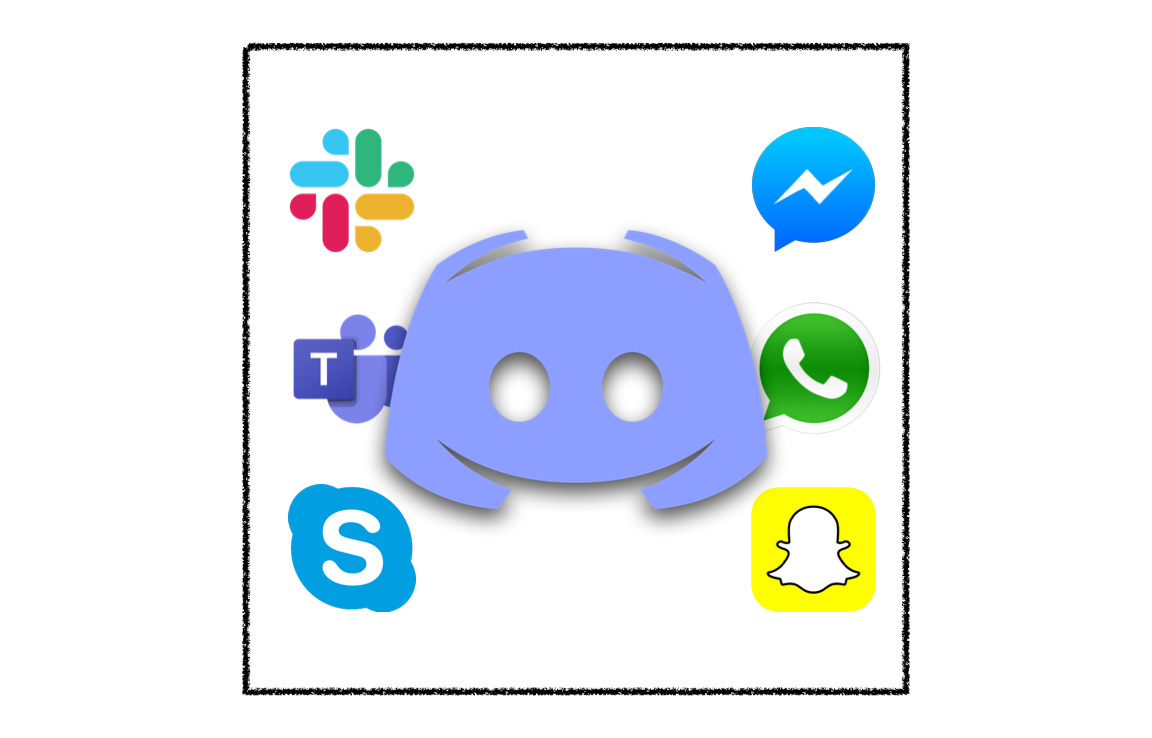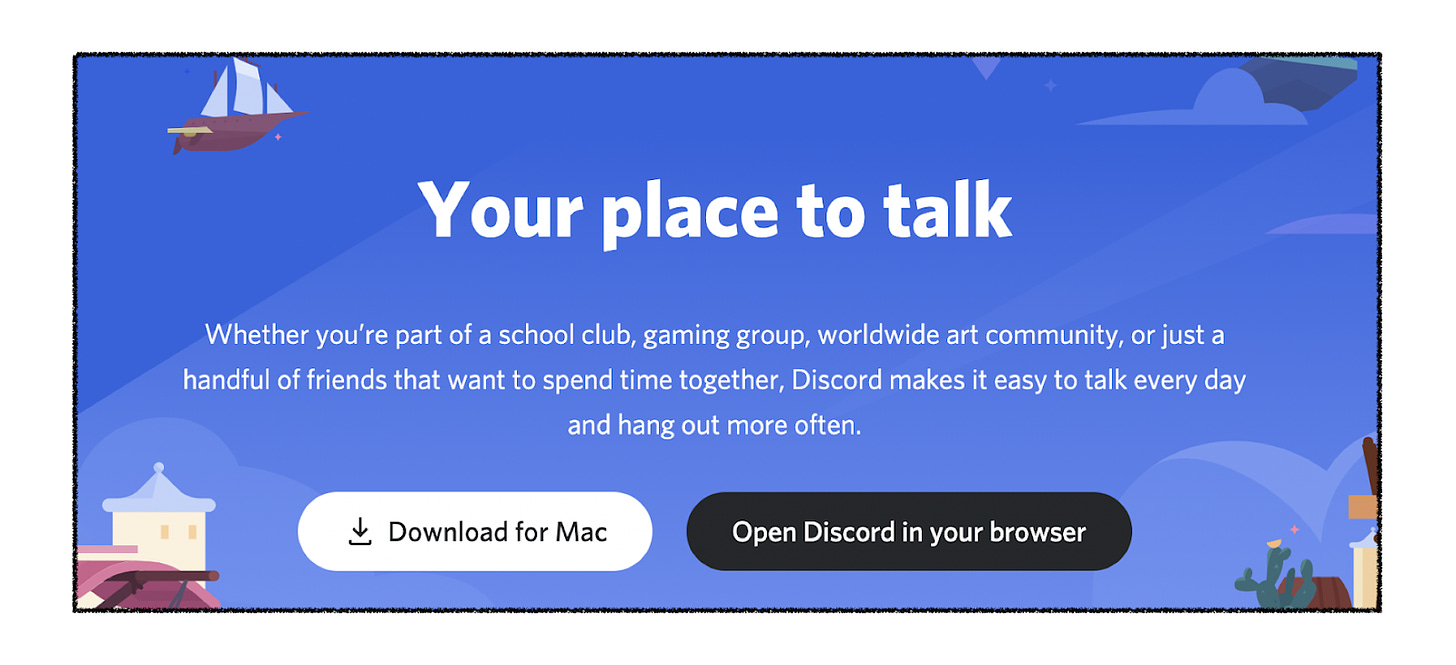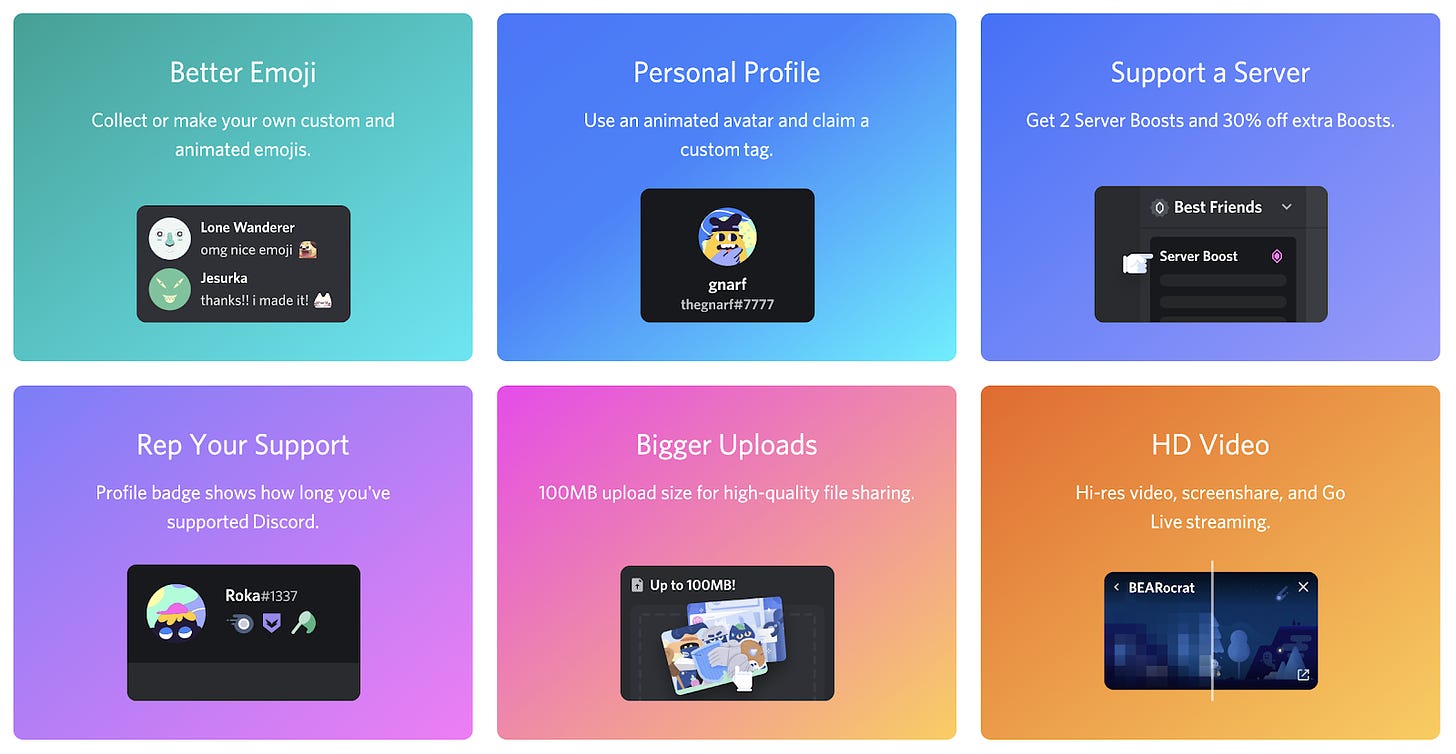Discord Nitro: Monetizing Fun
Discord is escaping competition by aligning revenue with user delight.
SaaS Pricing is hard. PricingSaaS is your cheat code.
Monitor competitors, track real-time benchmarks, discover new strategies, and more.
Happy Sunday y’all!
Hope you’re all safe and healthy. I’ll be hunkering down in New Hampshire with family for the next week, and look forward to taking a breather, reading by the fireplace, and of course, crushing food.
Last week, I had the chance to publish a Q&A with Eddie Machaalani, Co-Founder of BigCommerce, an absolute SaaS legend, and one of the greatest guys. We met through Trung Phan, The Hustle’s Twitter-thread savant and a legend in his own right (follow him if you don’t already - you’ll thank me later).
Eddie’s story is amazing and a great example of listening to customers and building a product you know there’s a market for.
On to this week’s analysis.
Discord occupies a fascinating middle-ground in the world of messaging.
Not quite built to support the Enterprise, but more capable than social messaging apps, Discord lives somewhere in between.
For the unfamiliar, Discord started as a chat-app for gaming but has since evolved to serve communities of all interests with a place to hang out, talk, and collaborate.
For those old enough to remember, Discord’s neighborhood vibe has been compared to the golden days of AIM. Users can jump on, see who’s around, and chat seamlessly.
Though Discord hasn’t tried to challenge Slack in the Enterprise, that hasn’t stopped analysts from making the case that they may be Slack’s biggest threat (besides Teams).
While that’s interesting, it doesn’t seem to be a focus for them right now. In fact, CEO Jason Citron claims growing beyond gaming wasn’t even on their radar until they realized 30% of users were using the product for non-gaming communities.
Today, the Discord team is focused on giving users the best digital hang possible. Their current positioning stretches far beyond gaming, encapsulating any community or group that wants a place to connect online.
A Different Path to Monetization
Alongside this focus of cultivating community, Discord has pursued a unique monetization model.
Rather than charge per user like Slack, Teams, and other Enterprise messaging apps, Discord’s core functionality is free.
Rather than monetize their free user-base through ads like Facebook, Snap, and other social apps, Discord decided ads weren’t for them.
CEO Jason Citron explained his thinking around monetization in an interview with Patrick O’Shaughnessy on the Invest Like the Best podcast.
“We had talked about not selling ads before, but it came up again because it's a way that other companies have been successful in the social media space. But I really didn't want to sell ads because I felt like it would require us to spend a tremendous amount of energy building all this ad technology that actually doesn't make the end-user experience directly better. It actually subtracts from the end-user experience, so we'd be spending a ton of energy taking value away from our users so that we could make money. I really wanted to build a business where the incentives of our team and our user base were directly aligned, where our users were our customers.”
The result of this customer-first thinking is a paid subscription offering called Nitro.
When Nitro launched in 2017, it was billed as a donation model. For $5, users could support Discord and get some perks to make their chat experience more enjoyable.
While the $5 subscription still exists as Nitro Classic, over the past few years they’ve added new features allowing users to enrich creative expression and build tighter communities.
The new Nitro costs $10 per month and includes custom emojis, high-quality video when live-streaming, and, perhaps most importantly, Boosting.
Boosting is a way to give back to your Discord server, which is what Discord calls a “community”, “group” or “team” within the app.
By boosting their server, community members can work together to unlock perks like custom emojis, banners, and other features that make their space more personalized. The more people that boost, the more perks for the server.
Users also get a badge that shows they’re a booster, which evolves the longer they continue boosting, adding an element of signaling as well.
Citron acknowledges that on paper, these features don’t sound profound.
However, he contends that giving back to the server makes users feel good and makes the community tighter. Importantly, while these premium features are fun and provide value for the users that want them, they’re not totally necessary, so free users don’t feel left out.
This is especially unique in the current era of value-based subscription pricing where most companies are looking for ways to align usage with value. As it stands with Discord’s current pricing, usage has nothing to do with how much a user has to pay.
The Two-Sided Strategy Credit
It feels like Citron and the Discord team are tapping into something deeper here.
It’s refreshing to hear about a company openly eschewing the opportunity to print money with ads to improve the user experience instead. Perhaps Discord setting the example by prioritizing the interests of their community above all else sets the tone for others to build and nurture strong communities on their platform.
Ben Thompson defines a Strategy Credit as an uncomplicated decision that makes a company look good relative to other companies who face much more significant trade-offs.
By not fitting into either category perfectly; Enterprise communication or pure social communication, Discord has Strategy Credits in both directions.
If they wanted to pursue Enterprise messaging, their Freemium model would immediately appeal to price-sensitive Slack customers.
On the social side, resisting ads means Discord earns positive optics to other social apps when users are considering a digital home for their community.
Further, by monetizing on a completely different axis than Enterprise messaging tools and social apps, Discord avoids competing with either. This allows them to resist distractions and focus on their own users.
To be clear, I’m not opposed to Slack’s pricing model or Facebook’s advertising strategy. Slack has been known to refund customers trivial amounts to be as fair as possible, and Facebook advertising has been life-changing for many small businesses.
All I’m saying is Discord exists in a rare space where their monetization strategy is beyond criticism, and it all traces back to user-first thinking.
Enjoying Good Better Best?
If you enjoyed this post, I’d love it if you hit the like button up top, so I know which posts are resonating most!
If you have feedback, I’d love to hear it - hit me up on Twitter.







